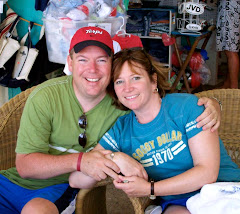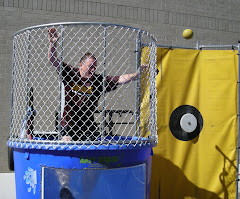One small change can yield big results
Students in Hayley
Dupuy’s sixth-grade science class at the Jane Lathrop Stanford Middle
School in Palo Alto, Calif., are beginning a unit on plate tectonics. In
small groups, they are producing their own questions, quickly, one
after another: What are plate tectonics? How fast do plates move? Why do
plates move? Do plates affect temperature? What animals can sense the
plates moving? They raise questions “that we never would have thought of
if we started to answer the first question we asked,” says one of the
students. “And just when you think you already know the question you
want to focus on, you realize: ‘Oh, wow, here’s this other question that
is so much better, and that’s really what you need to think about.’”
Far from Palo Alto, in the Roxbury neighborhood of Boston, Mass., Sharif Muhammad’s students at the Boston Day and Evening Academy (BDEA) have a strikingly similar experience. Many of them had transferred to BDEA for various reasons from other schools and had not always experienced much success as students. But working individually, they find that formulating their own questions engages them in a new way. One of the students observes: “When you ask the question, you feel like it’s your job to get the answer, and you want to figure it out.”
These two students—one in Palo Alto, the other in Roxbury—are discovering something that may seem obvious: When students know how to ask their own questions, they take greater ownership of their learning, deepen comprehension, and make new connections and discoveries on their own. However, this skill is rarely, if ever, deliberately taught to students from kindergarten through high school. Typically, questions are seen as the province of teachers, who spend years figuring out how to craft questions and fine-tune them to stimulate students’ curiosity or engage them more effectively. We have found that teaching students to ask their own questions can accomplish these same goals while teaching a critical lifelong skill.
The Question Formulation Technique
Dupuy, Muhammad, and many other teachers are using a step-by-step process that we and our colleagues at the Right Question Institute have developed called the Question Formulation Technique (QFT). This technique helps students learn how to produce their own questions, improve them, and strategize on how to use them (see sidebar “Question Formulation Technique”).
The origins of the QFT can be traced back 20 years to a dropout prevention program for the city of Lawrence, Mass., that was funded by the Annie E. Casey Foundation. As we worked together to increase parent involvement in education, we heard parents state the same problem over and over again: “We’re not going to the schools because we don’t even know what to ask.” Eventually, this problem led us to create a simple but powerful process that has been used effectively in a wide range of fields across the country and beyond. In health care, for example, research funded by the National Institutes of Health has shown that the QFT produces dramatic increases in levels of patient activation and improved patient-provider communication. In the classroom, teachers have seen how the same process manages to develop students’ divergent (brainstorming), convergent (categorizing and prioritizing), and metacognitive (reflective) thinking abilities in a very short period of time.
Teachers can use the QFT at different points: to introduce students to a new unit, to assess students’ knowledge to see what they need to understand better, and even to conclude a unit to see how students can, with new knowledge, set a fresh learning agenda for themselves. The technique can be used for all ages.
Students have used the QFT to develop science experiments, create their own research projects, begin research on a teacher-assigned topic, prepare to write an essay, analyze a word problem, think more deeply about a challenging reading assignment, prepare an interview, or simply get themselves “unstuck.”
Far from Palo Alto, in the Roxbury neighborhood of Boston, Mass., Sharif Muhammad’s students at the Boston Day and Evening Academy (BDEA) have a strikingly similar experience. Many of them had transferred to BDEA for various reasons from other schools and had not always experienced much success as students. But working individually, they find that formulating their own questions engages them in a new way. One of the students observes: “When you ask the question, you feel like it’s your job to get the answer, and you want to figure it out.”
These two students—one in Palo Alto, the other in Roxbury—are discovering something that may seem obvious: When students know how to ask their own questions, they take greater ownership of their learning, deepen comprehension, and make new connections and discoveries on their own. However, this skill is rarely, if ever, deliberately taught to students from kindergarten through high school. Typically, questions are seen as the province of teachers, who spend years figuring out how to craft questions and fine-tune them to stimulate students’ curiosity or engage them more effectively. We have found that teaching students to ask their own questions can accomplish these same goals while teaching a critical lifelong skill.
The Question Formulation Technique
Dupuy, Muhammad, and many other teachers are using a step-by-step process that we and our colleagues at the Right Question Institute have developed called the Question Formulation Technique (QFT). This technique helps students learn how to produce their own questions, improve them, and strategize on how to use them (see sidebar “Question Formulation Technique”).
The origins of the QFT can be traced back 20 years to a dropout prevention program for the city of Lawrence, Mass., that was funded by the Annie E. Casey Foundation. As we worked together to increase parent involvement in education, we heard parents state the same problem over and over again: “We’re not going to the schools because we don’t even know what to ask.” Eventually, this problem led us to create a simple but powerful process that has been used effectively in a wide range of fields across the country and beyond. In health care, for example, research funded by the National Institutes of Health has shown that the QFT produces dramatic increases in levels of patient activation and improved patient-provider communication. In the classroom, teachers have seen how the same process manages to develop students’ divergent (brainstorming), convergent (categorizing and prioritizing), and metacognitive (reflective) thinking abilities in a very short period of time.
Teachers can use the QFT at different points: to introduce students to a new unit, to assess students’ knowledge to see what they need to understand better, and even to conclude a unit to see how students can, with new knowledge, set a fresh learning agenda for themselves. The technique can be used for all ages.
Students have used the QFT to develop science experiments, create their own research projects, begin research on a teacher-assigned topic, prepare to write an essay, analyze a word problem, think more deeply about a challenging reading assignment, prepare an interview, or simply get themselves “unstuck.”
To read more about QFT, click here: http://www.hepg.org/hel/article/507
Thanks to MiddleWeb for bringing my attention to this article.



















No comments:
Post a Comment